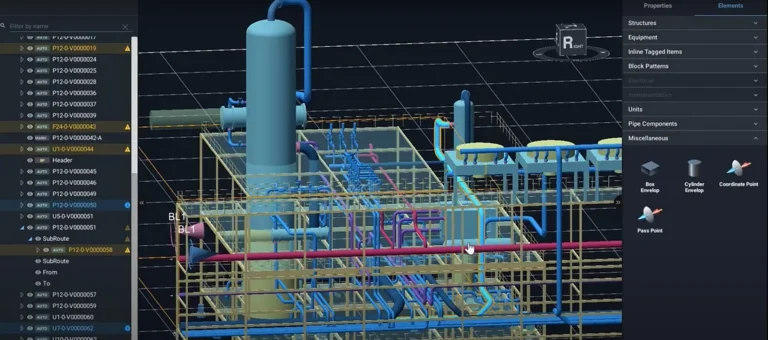PlantStream Blog
Digital Transformation Key To Staying Relevant in the Oil and Gas Industry
Date :Mar 3, 2022

As companies emerge from the COVID-19 pandemic and its devastating financial impact, many CEOs and other business leaders are looking for ways to innovate to stay relevant and economically competitive. From the hospitality industry to retail, more companies invest in technologies that can showcase their products in new and exciting ways while also keeping customers interested.
The oil and gas industry is no exception. With more customers shifting toward alternative energy, oil and gas companies are looking to modernize, cut costs, and become more energy efficient. Successful digital transformation can help businesses achieve these goals.
In this blog post, we take a closer look at the current profile of the global energy market and how digital transformation is helping companies to stay competitive.
The Current State of Energy
Today’s oil and gas industries were born out of the Industrial Revolution of the 20th century and quickly became integral to the growth of major world economies¹. According to some estimates, the 2021 global market size of oil and gas production was around $2.2 trillion, and it’s expected to increase by nearly 10% in 2022². Many oil and gas companies are still some of the most profitable businesses globally³. However, the nature of the energy market is rapidly changing. Even though the oil and gas market is still enormous, it was more than double its current size in revenue just a decade ago⁴.
This change is in large part due to transitions in energy demand. Fossil fuels are becoming increasingly unpopular due to climate change and concerns around the impact of environmental pollution on marginalized communities, which tend to live closer to energy plants⁵. At the same time, as states and cities are transitioning to cleaner energy sources like solar and wind power, fossil fuel companies are facing more pressure to lower their greenhouse gas emissions.

How Companies Are Adapting
Despite the decreasing demand for oil and gas, utilities that specialize in these areas will still provide a significant portion of the world’s energy production in the foreseeable future. And it’s still lucrative to be in the business — since the start of COVID-19 and the leveling out of the pandemic, the price of a barrel of oil has risen to around $100⁶.
But no company will remain unaffected by the current social and environmental transitions. To stay competitive, oil and gas players will have to find ways to respond and adapt and show they support a cleaner future — instead of fighting against it.
Some oil and gas companies have already had to find ways to change their energy mixes — either forcefully or by choice. For example, one of the largest utilities in California, San Diego Gas & Electric, has had to adapt to stringent state rules to transform its energy supply. The California Public Utilities Commission has asked major utilities to help the state achieve a goal of having nearly three-fourths of its energy mix come from renewable sources by 2032⁷. SDG&E has adapted by already transitioning around 40% of its energy mix to solar and wind power⁸.
However, SDG&E also had to invest in alternative solutions to meet its other obligations, like significantly reducing greenhouse gas emissions while not incurring damaging financial costs. The utility, like many others, has looked at ways to strengthen its grid with the help of digital technologies and data acquisition systems that can better monitor and detect when certain parts of its energy network have failed or aren’t working efficiently⁹.
Digital transformation — where data, technologies, software, and automation are used to transform systems, processes, and workflow across organizational structures — is a powerful strategy companies can use to meet environmental and political goals in a way that’s also economically beneficial.
What Does Digital Transformation in the Oil and Gas Sector Look Like?
The following technologies are now frequently used to effect change in the oil and gas industry:
- High-speed internet via 5G: Aging oil and gas infrastructure carries various risks. However, replacing outdated infrastructure can be expensive, and many companies are hesitant to take this step because the investment can amount to millions of dollars. At the same time, returns on their product may decrease over time.
But integrating 5G technology throughout a utility can significantly change the game¹⁰. The technology allows companies to gather large amounts of data and do real-time monitoring in the field, frequently resulting in safer, more efficient, and more reliable performance at a lower cost.
Adopting higher internet speeds also means companies can invest in cloud computing. Data can be secured and stored with a third-party data manager, like Amazon Web Services.
Furthermore, faster internet speeds are especially useful for oil and gas companies in rural areas and those that work in offshore drilling. For example, real-time data can help these companies to make better decisions on how to reduce their greenhouse gas emissions and meet other environmental goals.
- Automation: Many industries have gone through a digital transformation process to stay relevant and profitable, and have adopted automation as a result. For instance, using cameras, drones, and land and sea robotics¹¹ can help improve performance efficiency and reduce costs in the oil and gas industry. In fact, these technologies can entirely replace surveillance and inspection of assets and perform certain types of construction. In turn, some estimates¹² show that greater connectivity and the use of digital tools can reduce costs in this industry by 20–25% per barrel.
In addition, artificial intelligence (AI) can be helpful for companies needing to meet specific environmental targets. For example, an engineer who oversees hundreds of wells probably won’t be able to accurately monitor how each of them is performing. AI and automated surveillance could help to do the monitoring, thereby reducing over-pumping and electricity use¹³.
- Computer-aided design: A great many components go into constructing a building or manufacturing a car. The same is true of an incredibly complex, integrated oil and gas company. The planning, design, and engineering of facilities are critical to performance and safety. With the help of the latest digital technology, today’s drafters and engineers can more accurately sketch out blueprints and build complicated construction models¹⁴. The relevant software can be helpful in any industry, but especially when there are expensive and hazardous materials involved (as is the case in the oil and gas sector).

How CAD Can Be Applied in the Oil and Gas Industry
Digital transformation can occur at every point of the plant design, initiation, and operation process. When it comes to plant design, many digital tools are now available to streamline processes.
PlantStream, for example, has developed sophisticated computer-aided design (CAD) software to aid plant engineers¹⁵. Many oil and gas companies already use the software to design complicated pipeline systems. The benefits are numerous: for instance, the software can route 1,000 pipes in a minute while also considering the properties of the fluid going through the system, the connections, and the pipe sequence. In addition, the technology allows utilities to create quick, precise cost estimations and collect large amounts of data.
Plant designs can, of course, also be highly complex as they have to take workability, operability, maintainability, and safety within a limited amount of space into account. The PlantStream CAD software can streamline the process, reduce costs, and free up design engineers’ time, allowing them to focus on other tasks.
The Future of the Oil and Gas Industry
Oil and gas companies won’t look the same 10 years from now. With increasing emphasis on addressing climate change and laws that govern greenhouse gas emissions, these organizations will have to adapt to stay afloat. In many instances, this will mean changing their energy mix and contributing to sustainability initiatives.
Many companies are now also looking toward digital transformation to help save costs. This type of transformation will ultimately also help utilities to meet climate requirements while increasing the efficiency of their production lines. Everything from high-speed internet and cutting-edge software to drones and robots can completely change the effectiveness of a company’s operations. As the world changes, economies and industries must change. And companies set on staying competitive and sustainable will have to figure out how to modernize their business models, too.

- Editors (Aug, 2018). ‘Oil Industry.’ from History.com.
- IbisWorld (Feb, 2021). ‘Global Oil & Gas Exploration & Production — Market Size 2005–2027.’ Retrieved from Ibisworld.com.
- Partington, R (Apr, 2019). ‘Saudi oil company named world’s most profitable business.’ Retrieved from The Guardian.
- IbisWorld (Feb, 2021). ‘Global Oil & Gas Exploration & Production — Market Size 2005–2027.’ Retrieved from Ibisworld.com.
- IEA analysis (Jan, 2020). ‘The Oil and Gas Industry in Energy Transitions.’ Retrieved from IEA.org.
- Saefong, M (Jan, 2022). ‘Oil prices may soon rise to $100 a barrel. Here’s why. Retrieved from MarketWatch.
- San Diego (Feb, 2022). ‘CPUC approves long-term plans to meet electricity reliability and climate goals.’ Retrieved from Sandiegocitd.org.
- SDGE (2022). ‘Environment: Our Commitment.’ Retrieved from SDGE.com.
- SDGE News (Nov, 2020). ‘Discovery and Innovation With Machine Learning.’ Retrieved from SDGENews.com.
- Grijpink, F, Katsap, N, Verre, F, and Ward, R (Nov, 2020). ‘How tapping connectivity in oil and gas can fuel higher performance.’ Retrieved from Mckinsey.com.
- Grijpink, F, Katsap, N, Verre, F, and Ward, R (Nov, 2020). ‘How tapping connectivity in oil and gas can fuel higher performance.’ Retrieved from Mckinsey.com.
- Grijpink, F, Katsap, N, Verre, F, and Ward, R (Nov, 2020). ‘How tapping connectivity in oil and gas can fuel higher performance.’ Retrieved from Mckinsey.com.
- Hislop, M (Nov, 2021). ‘How AI can help oil and gas producers reduce greenhouse gas emissions — and improve business.’ Retrieved from CIO.com.
- YTI (Mar, 2021). ‘What is computer-aided design and why is it important?’ Retrieved from YTI.edu.
- PlantStream (Sep, 2021). ‘Using PlantStream with no previous CAD Experience’ Retrieved from Plantstream.Medium.com.
Want to Learn More about PlantStream?
Book a Demo Today
Connect with an expert to start your PlantStream journey.
Realize more efficient 3D plant design through seamless workflows.
